On View
The Bauhaus Did Ballet? See the Surreal Costumes From the German Design School’s Little-Known Performance
Germany's riotous 100th birthday celebration for the Bauhaus begins with the restating of a 1922 ballet.

Germany's riotous 100th birthday celebration for the Bauhaus begins with the restating of a 1922 ballet.

Kate Brown

The Bauhaus has inspired everything from architectural wonders in Brazil to your favorite album cover to your mom’s sleek dining room chairs. But you might be surprised to learn that the legendary German design school also used the stage as its canvas, designing an elusive and mystical ballet.
As Germany celebrates the Bauhaus centenary this year with a diverse and packed program, Berlin’s Academy of Arts is showing a critically acclaimed yet obscure performance created by German artist and Bauhaus figure Oskar Schlemmer. Presented in the capital for the first time in years, the Triadic Ballet is, just like everything the members of the German school touched, uncompromisingly contemporary.
The performance at the Academy of the Arts is a co-production with the Bavarian State Ballet. It uses imaginative costumes from the archive of choreographer Gerhard Bohner, who reconstructed Schlemmer’s original ideas in the 1970s from drawings and photographs. The performance premieres tonight, January 22, as part of a nine-day festival that presents 25 Bauhaus explorations into stage art.
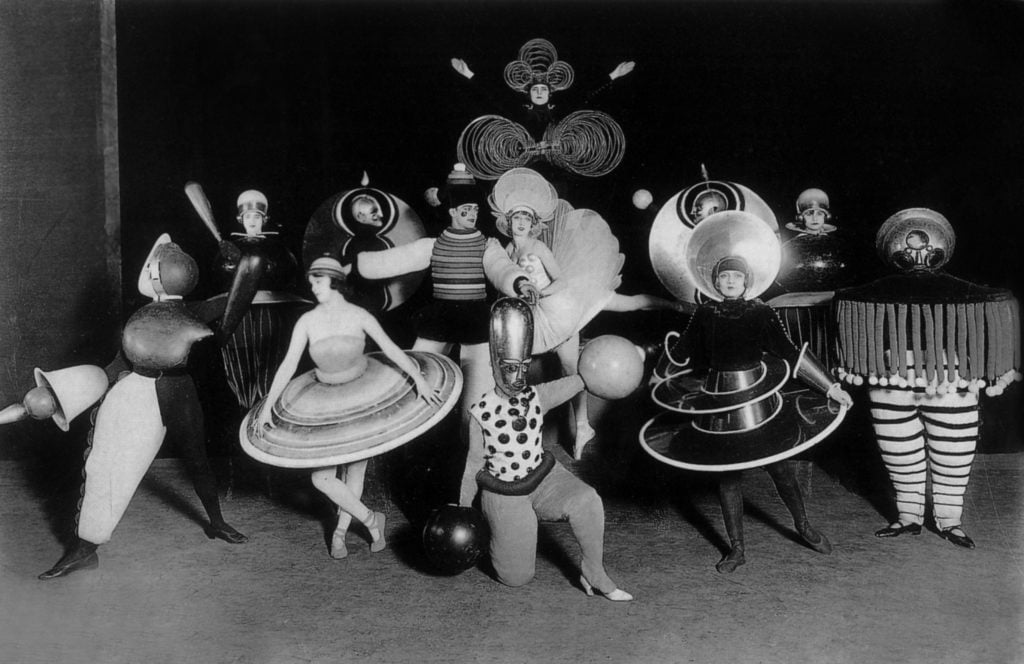
Costumes by Oskar Schlemmer (Bauhaus) for the Triadic Ballet, at Metropol Theater in Berlin. Photo: Ernst Schneider, 1926. (Apic/Getty Images)
The zany performance wouldn’t look out of place in an avant-garde theater in New York or Berlin today. The ballet—which consists of up to a trio of dancers on stage at one time—has no real plot. Instead, ballerinas wearing exquisite geometric costumes move around the stage, exploring the altered silhouettes of their bodies.
A playful male ballet dancer leaps around in a soft suit of sewn lumpy pillows; a ballerina glides across the all-black stage with a large slinky wrapped around her waist, which twitches as she moves.
“Draping the dancer’s body with movement-impending costumes was an extremely rare, even revolutionary act,” writes author Dirk Scheper in the ballet’s catalogue.
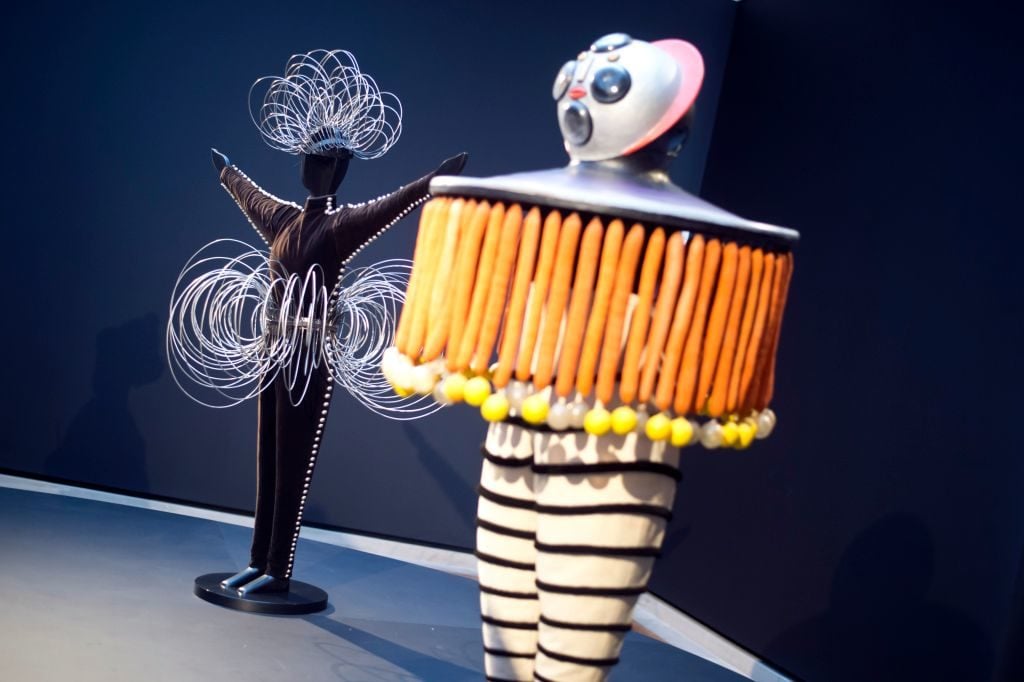
Costumes on view at the State Gallery in Stuttgart in 2014. Photo: Daniel Naupold/picture alliance via Getty Images)
Schlemmer, the ballet’s creator, was a preeminent Bauhaus figure and polymath known for his paintings, sculptures, stage designs, and choreography, which he described as “artistic metaphysical mathematics” and a “party in form and color.” He taught at the Bauhaus school from 1921 to 1929.
He debuted his ballet in Stuttgart in 1922, but before long, the rise of Hitler put a stop to his work. Schlemmer’s creations were displayed alongside those of many other Bauhaus artists in the Nazis’ “degenerate art” exhibition in Munich in 1937. He died in 1943, a few years before the end of World War II.
Back in the 1920s, Schlemmer himself described his goal: to make the audience feel amazed. “One should… have respect for and stand in awe of every possible movement of the human body, especially when on stage,” he wrote.
See images from the Triadic Ballet below.
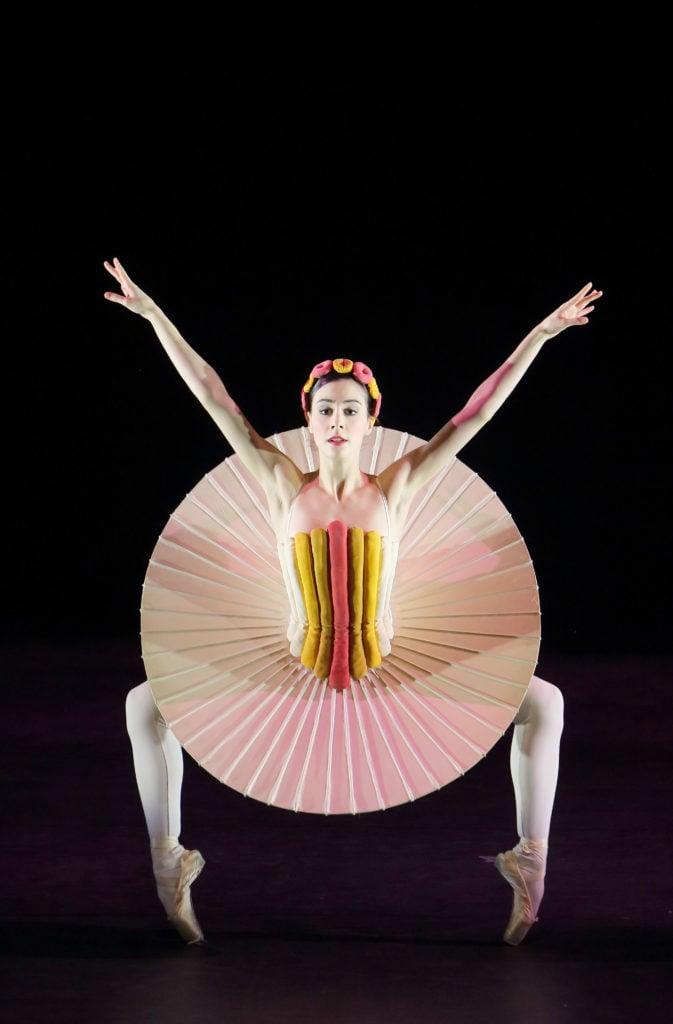
The Triadic Ballet, Bavarian Junior Ballet Munich. Photo: Wilfried Hösl.
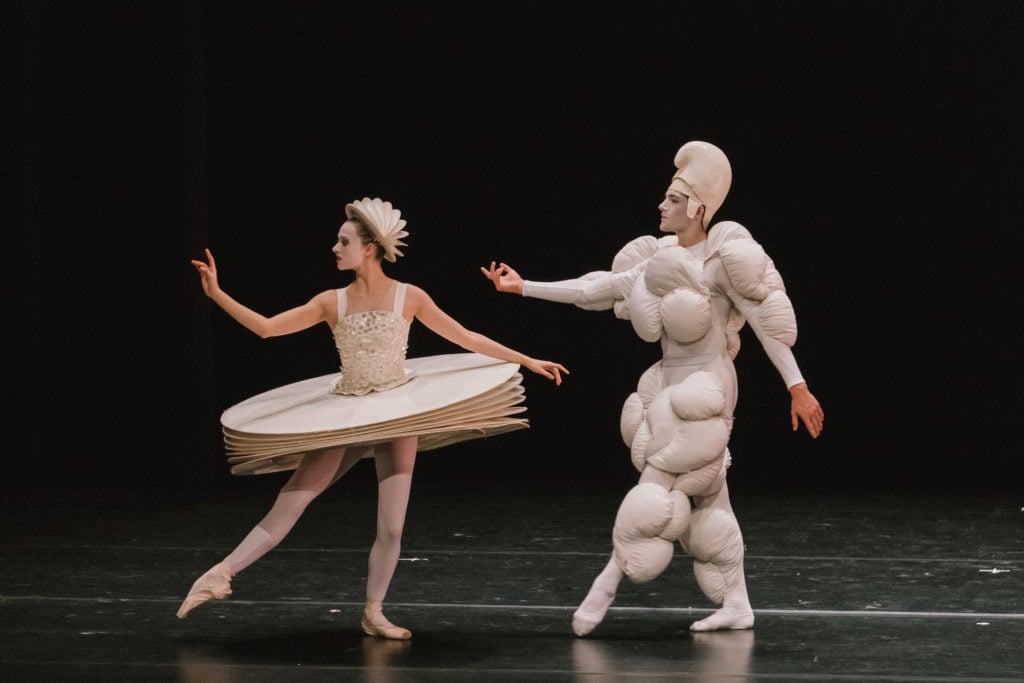
Photo: Severin Vogl.
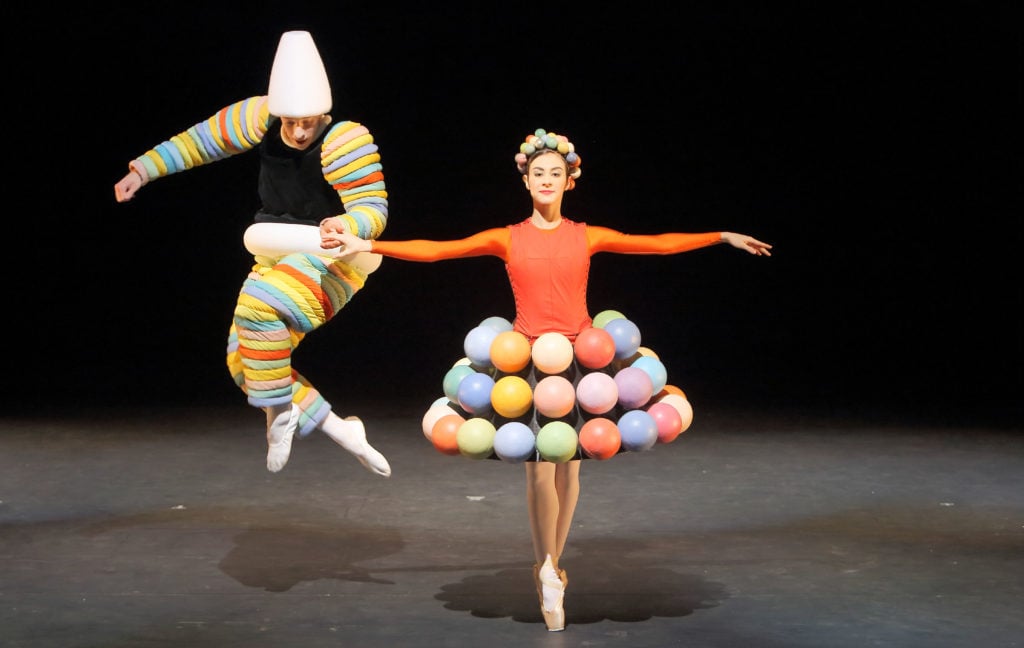
The Triadic Ballet, Bavarian Junior Ballet Munich. Photo: Wilfried Hösl.

Photo: Severin Vogl.
The Triadic Ballet premieres tonight, January 22, at 7 p.m. and 10 p.m. at Berlin’s Academy of the Arts on Hanseatenweg. The concurrent exhibition, Art.Figures.Costumes, is on view at the institution until January 24.